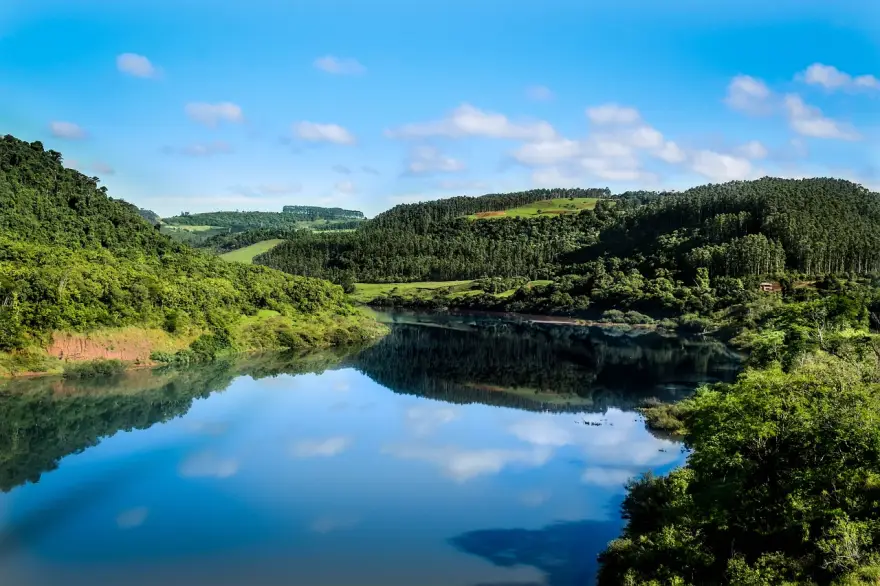Cultural Content as an Underused Force for Change

Cultural works do not emerge in a vacuum—they are born in connection with people, society, nature, the world, and its events. Every work approaches its topic from a certain perspective; there is no such thing as an objective depiction of reality. Both telling a story and choosing not to tell one are conscious or unconscious decisions.
“A camera always points somewhere, frames something, and never tells the whole truth. Art has context, and it is created in relation to that context,” says curator and doctoral researcher Satu Herrala.
In spring 2024, the project Forest as a Stage for Geopolitics brought the Uruguayan play Metsä Furiosa by Marianella Morena to the Finnish National Theatre, along with a public event curated by Herrala, where environmental advocates, researchers, artists, and business representatives discussed forests and the forest industry. The project also includes a prison theatre project in Uruguay directed by Jussi Lehtonen and a documentary about the production.
This documentary art and research project began in 2019 when UPM decided to build one of the world’s largest pulp mills in Uruguay. The factory has brought environmental damage, eucalyptus plantations, and social harms.
“- In Finland, we talk about logging and conservation at the local level, but we understand little about the activities of large forestry companies in the global South. It was harsh for the Finnish audience to encounter an angry Uruguayan actor who asks directly: ‘Why are you here to exploit our land?’” Herrala says.
A five-star theatre review by Maria Säkö in Helsingin Sanomat sparked a heated debate. Local testimonies about chemical leaks, sex trade, and dried-up wells were finally heard. The dominant economic perspective in public debate temporarily stepped aside. Large corporations try to control public narratives, Herrala says, but they struggle to manage artistic discourse.
“- We consciously sought to influence society through art. Marianella used the documentary material she had collected, and the characters in the play resembled real people. We brought ecological and social perspectives to the forest industry debate, as part of Finnish awareness and responsibility.”
Finnish pension funds hold significant shares in forest companies, making us all complicit, Herrala reflects. News from distant places often feels abstract, but art can touch the audience viscerally. It impacts us intellectually, emotionally, and physically.
“Art awakens, fosters empathy, reshapes understanding, and resonates holistically. It has a crucial role in helping people grasp their own involvement and activate collective responsibility.”
There is no universal method for impactful storytelling—each work must find its own form, Herrala notes. What matters most is that creators understand that power, responsibility, and freedom are inseparable. Cultural content carries influence: it conveys values and worldviews.
“A good starting point is not to underestimate the audience and not to shy away from painful topics. If people feel preached to, there’s no impact. You get people to think when things rub against each other—when complexity is preserved. If the creator manages to spark a reaction, ignite curiosity about another perspective, cause confusion or discomfort, or bring the viewer face-to-face with the unexpected—then change happens.”
Cultural content has immense transformative power, yet it remains largely untapped, Herrala states, whether in the context of the climate crisis or fostering social connection.
“Finnish society is divided, and public appreciation of culture is low. Art has the ability to empower communities and bring people together—especially when they can see themselves and their values reflected in it. Art holds vast, unused potential.”
Nature Imagery Shapes Our Ideas of Nature
Most people have strong images of savannas and oceans—but few have seen them firsthand. Audiovisual content strongly shapes our understanding of nature, says postdoctoral researcher Kristiina Koskinen from the University of Lapland. Her dissertation examined how nature documentaries, especially Avara luonto by the Finnish Broadcasting Company Yle, construct ideas of nature. Before her research career, Koskinen worked in television and documentary production for a decade.
“Screen-based representations of nature operate under different conditions than direct observation. A nature documentary isn’t a record of reality—it reflects its creators’ conceptions of nature and the world. Many are part of big-budget international TV production, combining messages of conservation and appreciation of nature and the destructive forces of consumption,” Koskinen explains.
The narrative style makes the viewer see the screen as a window into nature, which operates on its own terms, free from human influence. The persuasive power of the images is not necessarily negated even by the narrator’s voice, which speaks of the role of humans.
Koskinen’s dissertation used case studies to analyze how nature documentaries depict non-human agency. Traditional storytelling often builds narrative arcs from unrelated scenes, with animals as protagonists.
“In one documentary I analyzed, the story followed two individual animals growing up in the forest, presenting their development as a personal journey. When anthropomorphized animals appear to act intentionally and shape their environment, the story suggests a view of nature where success depends on individual willpower,” Koskinen says.
In contrast, episodic documentaries highlight randomness and environmental conditions. A third style depicted nature as governed by immutable natural laws, where animals play no individual roles in the grand cycle of life.
“Narrative is our natural way of making sense of the world, even when it doesn’t suit describing nature. My research isn’t simply criticism—humans can’t access nature without cultural interpretation. Beetles don’t make documentaries for other beetles,” Koskinen laughs.
Creators must acknowledge the inescapable human-centric lens, engage in ethical reflection, and assess the nature perceptions their work promotes in a time of climate and ecological crisis. They have power—and should use it wisely.
“It’s not useful to dictate from the outside how nature should be portrayed. But it’s crucial for creators to be aware of their own conceptions of nature—to read, think, and discuss. Cultural content affects us, and shifts in content shape how we act and understand the world,” Koskinen concludes.
Writer: Saana Katila